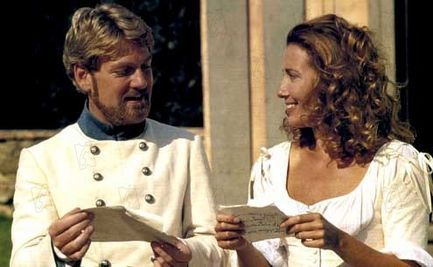I don’t have any strong opinions yet about Nate Silver’s revamped FiveThirtyEight, but, on their first day, they did have a piece on statistics and Shakespeare, and, what can I say, I’m an easy mark.
Emma Pierson took a look at how many lines any given pair of characters in a play spoke to each other. (She tried out four methods of tallying, described in her footnotes). Here’s what she found:
I wanted Romeo and Juliet to end up together — if they couldn’t in the play, at least they could in my analysis — but the math paid no heed to my desires. Juliet speaks more to her nurse than she does to Romeo; Romeo speaks more to Benvolio than he does to Juliet. Romeo gets a larger share of attention from his friends (Benvolio and Mercutio) and even his enemies (Tybalt) than he does from Juliet; Juliet gets a larger share of attention from her nurse and her mother than she does from Romeo. The two appear together in only five scenes out of 25.
First of all, credit where it’s due, she does recognize that, having your first interaction in a perfect sonnet should count for more than just the exchange of 14 lines. But, unlike the author, I wasn’t surprised to find out that the Macbeths rank much higher on the list of couples who interact.
The Macbeths are partners, already married and working on a project (murdering their way to the throne) together. Romeo has a project too (woo Rosaline Juliet and avoid the consequences of so doing) and he works on it with his partners: Mercutio and Benvolio. In a love story, the object of desire usually isn’t a partner until the end, when everyone is dead or wed, as genre demands.
Pierson says that Shakespeare’s strong women are most likely to be deeply textually connected to their lovers. (Her analysis didn’t include As You Like It, Measure for Measure, or Much Ado About Nothing, so Rosalind, Isabella, and Beatrice weren’t in play to support or falsify her hypothesis).
But, of the women she cites (Portia, Lady M, Cleopatra, and Katharina), I’d note that three of the four are engaged in some kind of plotting with their partner (trial shenanigans, murder shenanigans, war/diplomacy shenanigans) and Katharina presumably picks up a lot of her lines with Petruchio, since The Taming of the Shrew continues after her wedding, and sorting out their relationship is quite a large project to be going on with.
Love isn’t enough by itself. Love needs to be focused on something besides the feeling of the lovers to sustain a conversation or a relationship. The protagonists are more often connected to their friends than their lovers because those pairings are based in philia, the love that C.S. Lewis says is rooted in shared love for a shared interest or goal.
While the lovers pursue eros (and possibly agape) they usually haven’t had enough time for philia to root and blossom. Noticing that the lovers don’t have as much to say to each other isn’t surprising. It’s a reminder that there are many paths to agape and true connection, and that, despite our society’s romanticization of romance, friendship may be the better benchmark for connection.
Plus, as my Shakespeare professor used to say, Beatrice and Benedick struck him as the most stable couple because they were “united in a conspiracy against the world.” For myself, I could ask for nothing better, in friendship or in love, though I’d change the ‘against’ to ‘for.’
Bonus: Here I am as Portia (in a cunning lawyer disguise) facing down Shylock at the Merchant reading my friends held:














